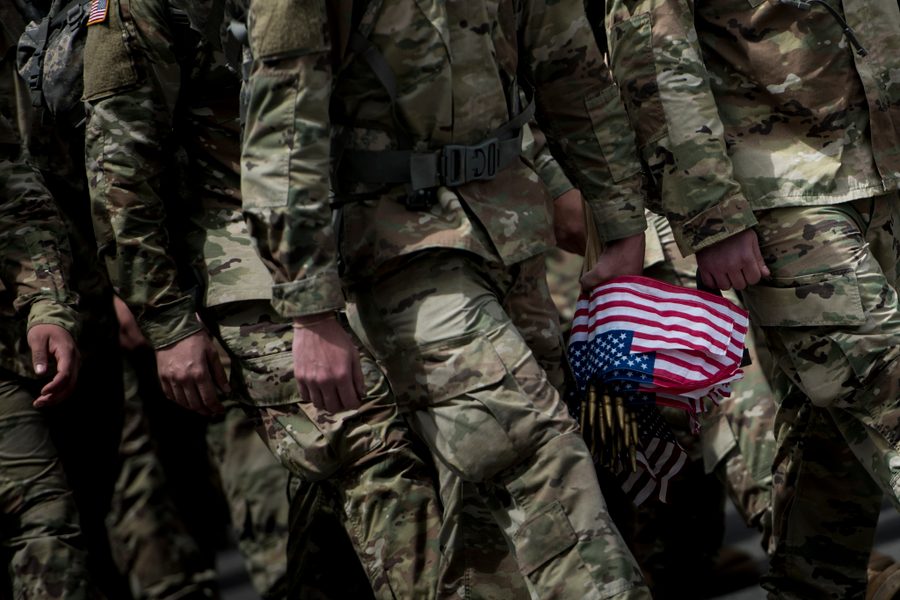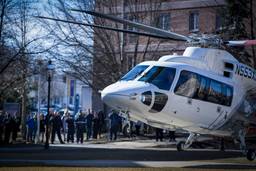Time to Redirect the Military Budget to Public Health
America’s addiction to war, by the numbers.
Indigo Olivier

When it comes to fighting wars abroad, there seem to be unlimited funds; the question of how we’re going to pay for it is rarely asked. Since taking office, President Trump has passed one of the most expensive defense budgets in U.S. history. As the United States faces the most serious and immediate threat it has faced in decades, the defense budget should instead be redirected toward combating our public health emergency.
Over the past two weeks, nearly 10 million Americans have filed for unemployment, and Federal Reserve economists project that number may come close to 50 million in the coming months. In a country where medical care is tied to employment, those who have recently lost their jobs will likely join the ranks of the uninsured — a population that stood at 27 million before the COVID-19 crisis began. And there are signs that this crisis is already hitting low-income communities of color the hardest. Physicians on the front lines report that the distribution of testing sites and medical resources have shown familiar biases against low-income majority-black neighborhoods. In Milwaukee, where all eight of their first fatalities were African American, Wisconsin Governor Tony Evers has referred to medical discrimination in the midst of the pandemic as a “crisis within a crisis.” With the United States now leading the world in confirmed coronavirus cases, and facing projections of up to 240,000 deaths, the military budget is a striking indicator of how drastically we need to reorient our political priorities.
How many lives could we save and improve if we redirected our massive military spending towards meeting the needs of people trying to survive the COVID-19 crisis?
- $6.4 Trillion will have been spent on U.S. budgetary costs and obligations from post-9/11 wars by fall 2020
- 57% of President Trump’s proposed 2020 budget will be spent on defense, or $718,000,000,000
- 36% of global arms sales between 2015-2019 were exported by the U.S., the world’s largest arms exporter
- $1 Trillion was spent on the F-35 fighter jet program over 60 years, the most expensive U.S. weapons program
- 1.3 Million people have died, directly and indirectly, from fighting in post-9/11 wars in Iraq, Afghanistan and Pakistan
- 1.2 Million metric tons of greenhouse gases — equivalent to the annual emissions of 2.5 million passenger cars — have been emitted by the U.S. military since the start of the War on Terror
- $2 Trillion in coronavirus relief spending was approved March 27, the largest stimulus package in modern U.S. history — more than twice the size of the 2009 stimulus
- 10% of the national GDP, proportionally, has been allocated for the U.S. relief package — less than both Germany and the UK, countries at similar stages of the pandemic
Indigo Olivier is a reporter-researcher for The New Republic and a 2020-2021 Leonard C. Goodman investigative reporting fellow. Her writing on politics, labor and higher education has appeared in the Guardian, The Nation and Jacobin, among other outlets.









